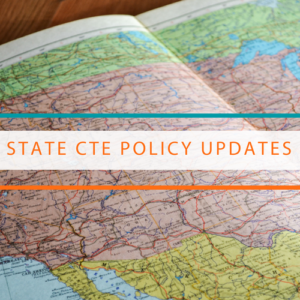 Advance CTE is committed to supporting states as they build cohesive, flexible and responsive Career Technical Education (CTE) ecosystems. With that responsiveness, comes a responsibility to provide quality CTE programs and interventions for learners that exist on the margin of society. One important group of learners that exists on the margin is students experiencing homelessness.
Advance CTE is committed to supporting states as they build cohesive, flexible and responsive Career Technical Education (CTE) ecosystems. With that responsiveness, comes a responsibility to provide quality CTE programs and interventions for learners that exist on the margin of society. One important group of learners that exists on the margin is students experiencing homelessness.
According to the Strengthening Career and Technical Education for the 21st Century Act (Perkins V), students experiencing homelessness are entitled to the same CTE services as all other students, including programs and services that are designed to prepare students for high-skill, high-wage and in-demand careers. CTE programs provide an additional pathway for these students to achieve success in the workforce that can help reate the stability they need. Illinois seeks to address this issue through S.B. 0190, which passed in 2021.
S.B. 0190 or The Higher Education Housing and Opportunities Act is a sweeping piece of legislation that requires a designated staff member at any “publicly or privately operated university, college, community college, business, technical or vocational school, or other educational institution offering degrees and instruction beyond the secondary school level,” to serve as liaison to youth experiencing homelessness and youth in the care of the state attending their institution.
The institution must create a separate liaison position dedicated to providing the wraparound support those students need to matriculate successfully should, after three years of tracking and reporting the homeless youth attending, that population be two percent or higher. The law defines homelessness as not having access to a fixed, regular and adequate nighttime residence. On-campus housing is excluded from this definition.
The liaison’s main roles are:
- To provide support with applying for Federal and state financial aid or other programs.
- To identify services and resources that are available to and appropriate for a student experiencing homelessness.
- To track and monitor the graduation rate and retention rate of learners defined by the law as “homeless students and students in care” enrolled at the institution.
- To report annually to the Board of Higher Education or the Illinois Community College Board, as appropriate, the number of students experiencing homelessness and students in care enrolled at the institution.
- To act as an intermediary between a student experiencing homelessness or student in care and the office of financial aid, student support services and campus housing services.
- To connect a student experiencing homelessness or student in care to a local continuum of care program.
- To develop a plan to provide access to on-campus housing or to suitable off-campus housing between academic breaks to students experiencing homelessness or students in care enrolled at the institution.
- To train the institution’s employees to identify students experiencing homelessness and to refer those students to the liaison.
The Higher Education Housing and Opportunities Act also requires The Board of Higher Education and the Illinois Community College Board to provide access to a training program that was developed by a homeless advocacy agency to ensure staff has the capacity to serve these students. They must also provide yearly training for liaisons and collaborate with the State Coordinator for McKinney-Vento Homeless Education to facilitate the transition of students experiencing homelessness from secondary to postsecondary education.
Finally, the law requires institutions to prioritize students experiencing homelessness or students in care when it comes to on-campus housing, including housing that is open during breaks (and to waive fees for on-campus housing during breaks.) This also includes allowing part-time students experiencing homelessness access to on-campus housing and the mandate to include their services to these students in their financial aid packets.
Illinois has managed to create a robust law that will serve a population that often gets overlooked in discussions of access and equity. With designated staff and liaisons invested in their care, students experiencing homelessness will have a stronger chance to succeed in the CTE programs they enroll in.
This legislation is designed to provide CTE learners of Illinois with better opportunities of entering the workforce and move past the housing insecurities they may have experienced. States can use this as a model of their own; creating a dedicated staff member to serve as liaison to these learners, creating reporting and accountability models and building in immediate responsiveness to the need for a permanent position to provide supports for students experiencing homelessness.
For more information on identifying common barriers to high-quality CTE and for additional strategies on how CTE and education leaders can work together to increase access and success in CTE programs for youth experiencing homelessness, read Making Good on the Promise: Improving Equity in and Access to Quality CTE Programs for Students Experiencing Homelessness.
Brice Thomas, Policy Associate
